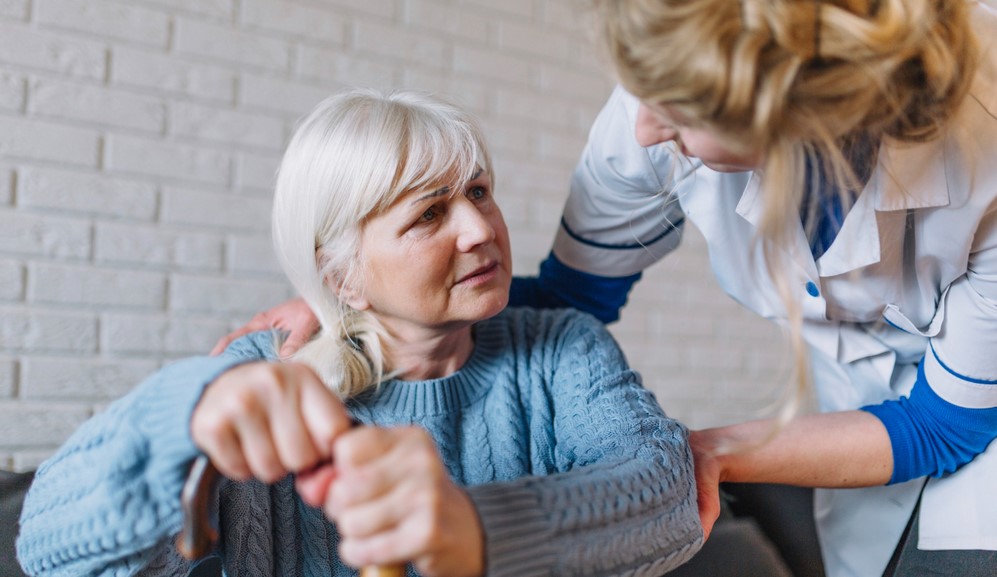A crucial function that nursing homes play in the care of senior citizens who need help with everyday tasks and medical needs. You expect safety, respect, and expert care when you entrust your loved one to a nursing home. Regretfully, abuse of various kinds occasionally betrays this trust and has a detrimental effect on the residents’ health and well-being.
The purpose of this handbook is to provide families and caregivers with the required knowledge to recognize early indicators of abuse and take appropriate preventative action. By increasing awareness about what defines abuse in nursing homes, how it appears, and what actions to take when it is suspected, we can enhance the safety and well-being of our senior citizens. Consulting with nursing home abuse lawyers can also provide necessary legal guidance and support in these efforts.
Recognizing the warning signals of abuse in nursing homes is only one aspect of understanding and combating it; another is fostering an environment that reduces the likelihood of abuse. This calls for strict regulatory compliance, intense worker training, and an open and accountable culture. By using this all-encompassing strategy, we hope to protect the rights and dignity of the elderly and guarantee that nursing homes continue to be places of comfort and care rather than abuse or neglect.
Comprehending Abuse in Nursing Homes
Abuse at nursing homes can take many different forms, and being aware of these can help you act quickly to safeguard the residents. The most obvious type of abuse may be physical, as seen by fractures, bruises, or other inexplicable wounds. Even though it is less obvious, emotional abuse can still be just as harmful and present as despair, withdrawal, or abrupt behavioral changes that are out of the person’s usual pattern.
Another crucial component of abuse in nursing homes is financial exploitation, in which residents become victims of fraud or coercion and experience unanticipated changes in their financial circumstances, such as withdrawals without explanation or modifications to estate documents. Families and nursing care workers must be vigilant in identifying these indicators.
Another horrifying kind of abuse that can happen in nursing homes is sexual abuse. Because the victims are often unable to communicate or are feeling confused and ashamed, it is frequently underreported. Injuries to private parts, unexplainable STDs, or abrupt panic in the presence of specific employees or residents are examples of warning signs.
Even if it’s not always as evident as other types of abuse, neglect can nonetheless be very damaging. It could show itself as unclean or hazardous living arrangements, neglected health issues, or inadequate personal hygiene. Understaffing or inadequate training may be the cause of this type of abuse, yet it can have a serious negative effect on an older resident’s health and wellbeing.
Caregivers and family members can intervene proactively and make sure the necessary steps are made to protect and secure the elderly in nursing homes by identifying the many forms of abuse and knowing how they can manifest. Having this knowledge is crucial to establishing a secure atmosphere that honors and respects each resident’s dignity.
Preventive Actions
Safeguarding the wellbeing of residents in nursing homes requires the implementation of effective preventative measures. Apart from the mandatory training of personnel and the involvement of families, there exist a few other measures that can considerably augment the protective atmosphere in these establishments.
Environmental Design and Safety Measures: Redesigning nursing homes’ physical spaces can lower the possibility of abuse. This entails setting up security cameras in public locations, making sure that areas are secure and simple to navigate, and utilizing alert systems that are simple to use so that residents can report any problems right away.
Frequent Audits and Compliance Checks: External organizations should carry out regular audits and compliance checks to guarantee that standards are constantly met and upheld. By identifying possible trouble spots before they become major issues, these audits support a continuous improvement and responsibility culture.
Community Involvement and Education: Forming alliances with neighborhood associations and advocacy groups can improve the resources accessible to employees and neighbors alike. Elder abuse prevention workshops, seminars, and ongoing education opportunities can strengthen the community surrounding the nursing home and empower all parties involved.
Encouraging Residents: Encouraging residents to report abuse without fear of reprisal can be achieved by informing them of their rights and giving them avenues to anonymously address concerns. Advocacy groups and resident councils can be effective channels for expressing grievances and proposing reforms.
From frontline caregivers to senior management, every level of nursing home administration must be committed to putting these policies into action. Fostering an environment that is open, courteous, and watchful can help nursing homes prevent abuse and improve the general standard of care that they offer to their patients. Establishing trust with families and guaranteeing that senior citizens receive the kind of care they are entitled to are made possible by this proactive approach.
Reporting and the Legal Framework
In order to properly handle nursing home abuse, it is essential to comprehend the legal framework and reporting procedures. This section offers a thorough examination of the legal options available to residents and their families in order to guarantee justice and safety.
How to File a Report of Abuse
Quick Reaction: Ensuring the victim’s safety should always come first when abuse is suspected. Depending on how serious the problem is, this can entail getting in touch with the local police department or the management of the nursing home.
Recording Proof: Gathering proof, including images, testimonies from witnesses, and medical records, can help prove abusers’ guilt. Documentation needs to be timely and comprehensive.
Making Contact with Authorities: To start an inquiry into the abuse, reports should be sent to the state health agencies, adult protective services (APS), or law enforcement in the area.
Seeking Legal Advice: Speaking with a lawyer who specializes in elder law can help you navigate the complexities of court cases and guarantee that the resident’s rights are completely upheld.
Legal Rights and Defenses
Numerous federal and state laws provide protections for residents of nursing facilities:
- Federal quality requirements for nursing homes are established by the Omnibus Budget Reconciliation Act (OBRA) through the Nursing Home Reform Act (NHRA) of 1987, which protects residents’ rights against abuse and neglect.
- Additional resources are available to prevent, detect, treat, comprehend, intervene in, and prosecute elder abuse thanks to the Elder Justice Act (EJA) of 2010.
- State legislation: To protect the elderly from abuse, every state has its own set of laws and protective services. These statutes frequently include details on filing reports and available legal remedies.
In addition, citizens have the right to confidentiality, respect, and information about their health and medical interventions. They also have the freedom to complain without worrying about retaliation. To ensure a strong defense against any abuse, it is essential that residents and their family understand these rights and how the law protects them.
People can significantly reduce the risk of elder abuse in nursing homes and ensure that those responsible are held accountable by being aware of and making use of these legal frameworks and reporting procedures. By acting with confidence and determination, families and caregivers may create safer environments for all residents.



